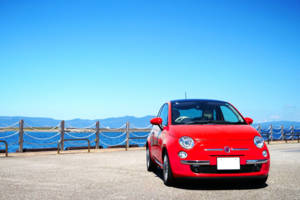Code for Conduct: Dressing up right to work at Japanese public schools
Tuesday, March 12, 2019
Ways to avoid wardrobe faux pas in Japanese schools and beyond.

The Hair Colour Registry
In October 2017, a Japanese high school student sued the Osaka Prefectural Government for ‘“bullying in the name of guidance”’[i].
The crime: her school had forced her to dye her naturally brown hair black, at first bi-weekly and thereafter, every four days, leaving her scalp inflamed and her hair damaged. Any disobedience on her part meant exclusion from school events and ultimately, expulsion from school altogether.
The case has attracted both local and international media coverage[ii], shining a spotlight squarely on the extreme standards of the Japanese school dress code, which ironically prohibits students from dyeing their hair. It has also launched a number of newspaper surveys to assess the pervasive extent of such draconian rules in larger, more cosmopolitan cities like Tokyo and Osaka,[iii] as well as sparked the formation of the Project to Eliminate ‘Black’ School Rules (ブラック校則をなくそうプロジェクト — Burakku Kōsoku wo Nakusō Purojekuto) – a largely NGO-run activist group.[iv]
The Osaka incident is neither unique nor isolated to students of Japanese ethnicity. A decade prior, The Japan Times highlighted similar physical and psychological trauma faced by a Brazilian high school student of Japanese descent in Shizuoka.[v]
The apparent solution has been the maintenance of a jige tōroku seido (地毛登録制度), or more specifically – a ‘brown-hair’ registry, that aims to document students with naturally brown hair upon admission, in order to avoid undue punishment for having flouted school rules. Not all schools maintain one however, preferring an equally problematic method – one might argue – of disciplining by cultural appropriation.

Where Do Teachers Stand?
While teachers’ dress codes are not imposed upon in equally rigid measure, the lack of explicit guidelines on how to look the part does mean having to strike a more precarious balance on getting it right, particularly for those foreign to insider cultural norms. Here are some general tips on the quirks of dressing up right for Japanese public schools (many points can be extended out into the standard Japanese work place), based on recent work experience as a foreign female teacher under the Japan Exchange and Teaching (JET) Programme.
Above the Collarbone; Below the Knees
The brief on ‘Work Attire’ in the latest edition of the JET General Information Handbook (GIH)[vi] – a critical bilingual resource for participants and contracting organizations alike, punctuates little beyond a line of professionalism. However, it is enough to warrant concern for managing first impressions. It is only when one scrolls the length of prefectural-level community sites such as Saga’s JET page[vii], that the extensive details of what’s appropriate and what’s not, emerges. Even so, as the notorious tagline for JET goes, ESID – Every Situation Is Different. Still, the line to tow and side to err on, is an overly conservative and formal one.
Layers in Summer; Lay Off in Winter
If the unequal gender divide were to be reflected in distinctions for dressing up, it is no surprise then that female teachers – ironically on account of more clothing options – have it somewhat trickier than men, especially in the trying heat and humidity of Japanese summers. Where for men, the daily dose of business casual means a half-sleeved shirt tucked and belted into trousers, for women it is capped sleeves at best; certainly no show of shoulders with even the broadest of sleeveless straps; and a high-neck collar with buttons that preferably go up to the collarbone. Knee-length skirts and no shorter, are an implicit mandate though with tunnel winds gusting across unsheltered stairwells unannounced, pants are always the wiser choice. They also do the trick of covering up tattoos – a frowned-upon appendage with negative associations, oftentimes connected to the local mafia.
If a form-fitting, translucent outfit is worn by female teachers, it is typically layered on for a solidly opaque and figureless final effect. Make-up is kept minimal and subtle in neutral or pastel tones, and jewellery, coloured nails and visible body piercings are virtually non-existent for the most part – identical almost, in fact, to the code of conduct expected from students.
Interestingly, where sweaty summers seep through layers of clothing, winter chills do the same for a lack thereof. It differs from school to school but in many institutions, students are not allowed to accessorize their uniforms with warm winter apparel and schools with heating facilities are not permitted to turn them on until a fixed date designated by the prefectural or municipal Board of Education (BOE).
As a result, it is a common sight to catch students quietly passing on shared heat packs or kairo under the table to stay warm. It isn’t openly discussed but rather, adopted by observation that many teachers largely stand in solidarity with their students. They do so by refraining from covering up with shawls and extra jackets, especially when teaching in the classroom. In this situation, as knitted vests sneaking out of students’ blazers might suggest, layering beneath with thermal underwear becomes a life-saver.

Shoes for In & Out, and In & In
The public/private dichotomy and their respective codes of behaviour are classically entrenched in Japanese custom. Shoes too, follow suit. In the pre-departure orientation for the JET Programme, participants are reminded to bring an additional pair of indoor shoes to swap into as soon as they enter school grounds. This is understandable enough. The stretch occurs when one realizes the need for yet another change of inner-wear when traversing certain areas of the school grounds, such as the gymnasium. Most foreign teachers come prepared with at least the one indoor pair to run around in but find themselves hung up on provisional slippers when entering the gym, and tripping over them while trying to balance a smooth pace.
Bare feet in public at any cost is absolute blasphemy, and holey socks at your own risk. A trade-off of the trippy slippers for socks alone, especially when a stage appearance is due, got this writer in trouble with the headmaster and so the advice here is plain and simple: pack along or buy gym shoes to your fit, other than the regular indoor shoes that you’ll wear out.
Subtlety for the Win, and a Blazer to Boot
Never go by the attire of sports or gym teachers – the rare, privileged few who aren’t allowed to but who ought to dress only in gym clothes or sportswear, come what (event) may. Seasons may change and new graduates may break out of years of suppression with extreme makeovers literally the day after they finish school but for the teacher – foreign or local, subtlety, conservatism and formality in appearance, is an intractable constant.
[i] (2017, October 27). Teen sues Osaka Pref. after school forces her to dye natural brown hair black. The Mainichi. https://mainichi.jp/english/articles/20171027/p2a/00m/0na/021000c
[ii] For example: McCurry, J. (2017, October 27). Japanese student sues over school’s order to dye hair black. The Guardian. https://www.theguardian.com/world/2017/oct/27/japanese-student-sues-over-schools-order-to-dye-hair-black
[iii] Weller, C. (2017, May 4). Most Tokyo high schools demand students prove their real hair color, study finds. Business Insider US. https://www.businessinsider.com/japanese-students-hair-color-2017-5
[iv] (2018, June 28). New Organization Takes On Unreasonable Rules in Japan’s Schools. Nippon.com. https://www.nippon.com/en/currents/d00414/new-organization-takes-on-unreasonable-rules-in-japan%E2%80%99s-schools.html
[v] Arudou, D. (2007, July 17). Schools single out foreign roots. The Japan Times. https://www.japantimes.co.jp/community/2007/07/17/issues/schools-single-out-foreign-roots/
[vi] (2019). JET General Information Handbook. The Japan Exchange and Teaching Programme. http://jetprogramme.org/en/gih/
[vii] What to Wear. SAGA JET PROGRAMME: The Official Saga JET Programme Community. https://sagajet.com/newcomers/school-life/what-to-wear/
----------------------------------------------
About the Author

Born in Kobe and left my soul behind when I moved to Singapore, cradled by the valleys of suburban Nagasaki, in a magical pottery town called Hasami, from which I've newly returned after working as an English teacher at the local high/elementary schools. Japan has given me so much, it'll take a lifetime's worth to keep giving back. This is but one way.








